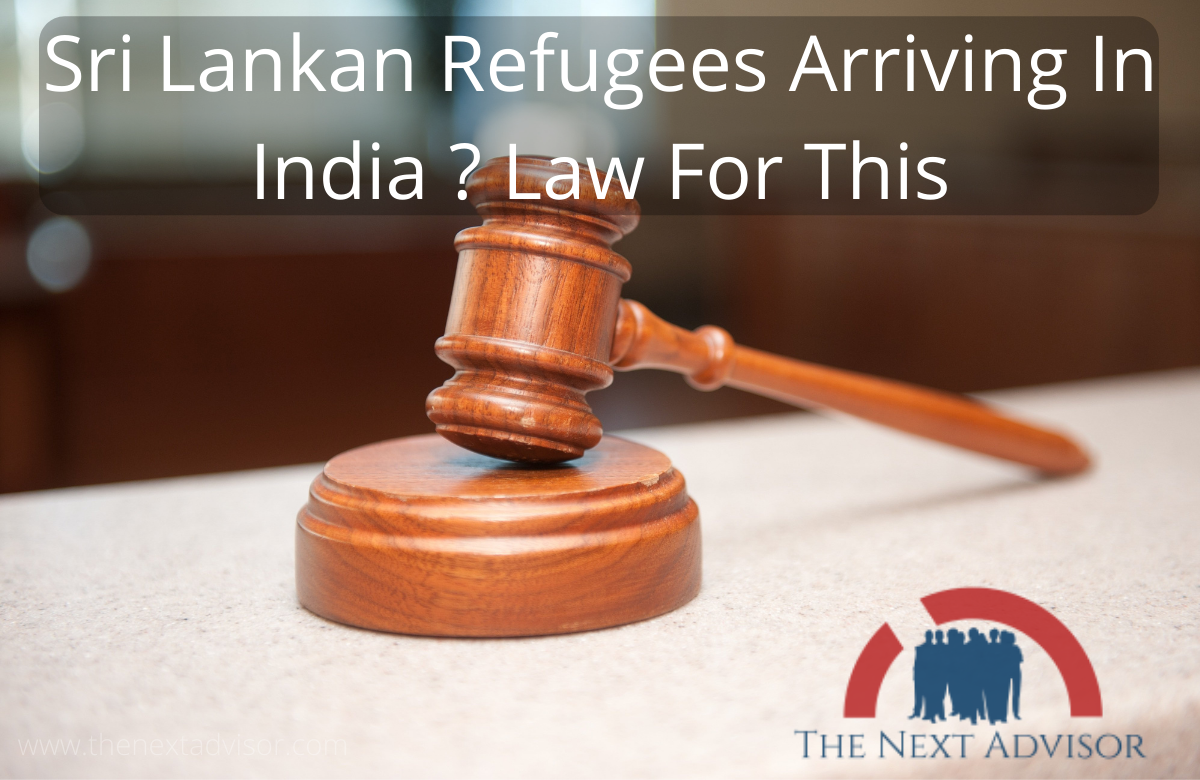The question before the Indian government is Should (Tamil) Sri Lankan arriving in India be treated as refugees?
What has happened due to which Sri Lankan Refugees Arriving in India
The economic crisis in Sri Lanka seems to have triggered a new refugee crisis as six Lankan Tamils, including three children, Who fled the island nation and were stranded on a sandbar off Dhanushkodi were rescued by the Indian Coast Guard (ICG) personnel early on Tuesday. According to police, another set of 10 Sri Lankan Tamils was held at Palam near Dhanushkodi later in the day.
What issues was there for Sri Lankan Refugees Arriving In India
However, in the absence of refugee law in India, some of them have been booked under the Passport Act and the Foreigners Act. The three Sri Lankan men who arrived in Tamil Nadu this week have been lodged in the Puzhal prison after being presented before a magistrate, While the women and children are being housed in the Mandapam Refugee camp for Sri Lankan refugees, 700 km from Chennai.
According to the refugees, the economic crisis in Sri Lanka forced them to flee the country, as they could not afford to feed their families. The group of two men, three women, three girls, and two boys was taken to the Dhanuskodi Marine police station. Indian Coast Guard and Q – branch sleuths are questioning them.
WHY DOES NOT HAVE A LAW ON REFUGEES means Sri Lankan Refugees Arriving In India
India does not have a refugee law in place as it is not a signatory to the 1951 UN Convention Relating to the Status of Refugees and the related protocol.
REFUGEE CONVENTION 1951
It is a United Nations multilateral treaty that defines who is a refugee and sets out the rights of individuals who are granted asylum and the responsibilities of nations that grant asylum. The core principle is non-refoulement, which asserts that a refugee should not be returned to a country where they face serious threats to their life or freedom. The 1967 Protocol broadens the applicability of the Convention. The Protocol removes the geographical and time limits that were part of the 1951 Convention.
India has signed neither the 1951 United Nations Refugee Convention nor its 1967 Protocol, which has 140 signatures. The USA and Venezuela are parties only to the Protocol. Countries that have ratified the Refugee Convention are obliged to protect refugees that are on their territory, in accordance with its terms.
WHY TAMIL NADU?
Barely 30 km away across the shallow Palk Strait, India has long appeared within reach, especially to Tamils in Northern and Eastern Sri Lanka. Ethnic affinity has made Tamil Nadu inviting, either as asylum or as a point of transit to the West, mostly Europe – Where a large and influential Tamil diaspora has gathered over the decades of war and political turbulence in Sri Lanka.
People and political parties in Tamil Nadu have been traditionally welcoming Sri Lankan refugees with similar ethnic and cultural roots. In the 1970s and 80s, India trained and armed the Tamil rebels, and the sea crossing presented no major threat to the illegal immigrants from Sri Lanka. This situation changed radically after Rajiv Gandhi was assassinated by the LTTE in 1991.
HISTORY OF SRI LANKAN REFUGEES
While Tamil – origin refugees from Northern and Eastern Sri Lanka had been arriving in India from long before the 1980s, their flow increased significantly after 1983 when ethnic clashes began on the island between the majority Sinhala Buddhist ruling class and the Indian – armed Tamil Tigers.
Those who arrived before 1983 were mainly Indian – origin Tamils whose forefathers had migrated to Sri Lanka to work in the tea plantations. From 1983, the Sri Lankan Tamils arrived in multiple waves. The first of these was between July 1983 and 1987, when 1.34 lakh Sri Lankan Tamils reached India, pushed by anti – Tamil riots in Sri Lanka.
The second wave of arrivals began after the war flared up in June 1990, and about 1,22,000 Tamils fled the island. The third wave of arrivals began in 1995 and continued until 2002. The exodus turned into a flood in 2008-09, the final years of the war. Refugees continued to arrive until 2013.
TOTAL REFUGEES
As per the latest records, about 19,000 Sri Lankan families – or 58,822 individuals, including about 10,000 children below the age of 8 – Live in 108 refugee camps set up for Sri Lankan Tamils in Tamil Nadu. Another 34,087 individuals with refugee certificates live outside the camps.
WHAT NEXT FOR THE NEW ECONOMIC REFUGEES?
The collapse of tourism following the Easter attacks of 2019 and the Covid – 19 pandemic has wrecked the Sri Lankan economy. The country is heavily import-dependent, and with foreign exchange reserves crashing, there have been acute shortages of food items, fuel, and other essentials. Staples like rice and milk have become unaffordable for large numbers of people.
The Indian government, over the next few months, would have to evaluate the extent of refugee influx into Tamil Nadu before it can decide on the next course of action, experts said. “Immigration comes under the Union List and the state government will have no say when it comes to formulating policies dealing with the new wave of economic migrants from Sri Lanka. It will be left to the Union government.
“Many factors including security concerns, bilateral relations between India and Sri Lanka, ethnic history with regard to Sri Lankan Tamil migration to India, and the proof of identity of refugees, etc Will be considered by the Union government before refugee status can be granted to the new migrants, “he said. If the number of migrants crossing over to Tamil Nadu is quite large, the state government may not be able to handle it alone, Sathiya Moorthy added.



























